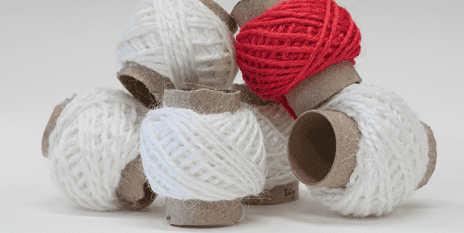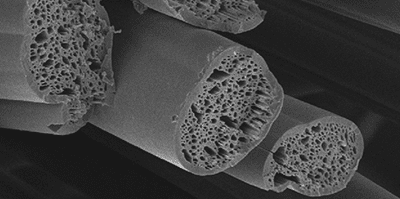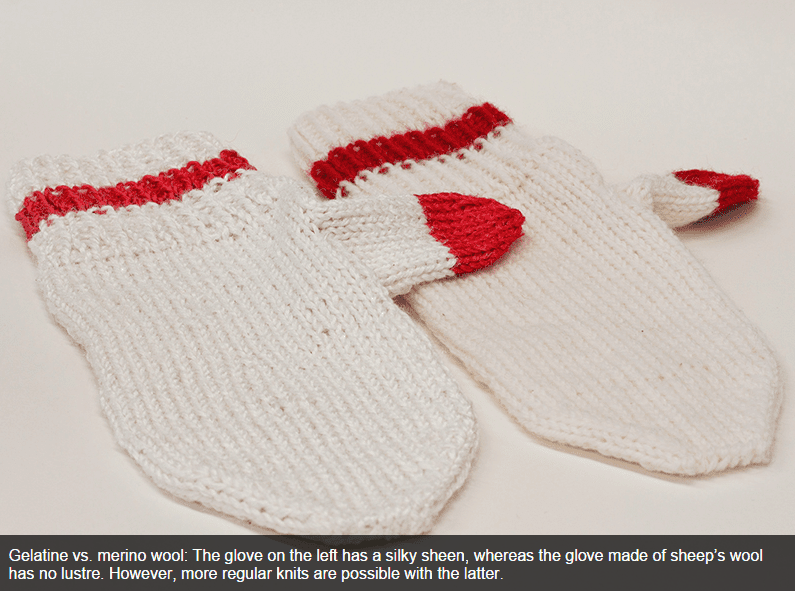Most of the yarn used today is synthetic, but in the last couple of years yarn sourced from biological raw materials have been making a comeback as manufacturers look for renewable alternatives. A PhD student at ETH Zurich developed one such promising alternative after he devised an innovative process to make fibers out of gelatine. Gelatine is mostly made of collagen, a main component of skin, bone and tendons which can be found in plentiful amount in slaughterhouse waste.

Spun into yarn and wound around cardboard rolls, it scarcely looks like gelatine at all. Image: ETH Zurich
Philipp Stössel, the 28-year-old PhD student, first noticed he was on to something when he added isopropyl, an organic solvent, to gelatine and found the solvent precipitated on the bottom of the reaction vessel. When he removed the peculiar mass, he was able to press it and found it was elastic. He then made threads from it. In time, Stössel and his thesis adviser refined the method.
Now, the bioyarn is threaded by syringes over two Teflon-coated rolls, constantly bathed in ethanol. This is to ensure the filaments do no stick. The spinning machine developed at ETH is able to generate 200 metres of filaments a minute, each only 25 micrometres in thickness.

Electron scan microscope image shows how the gelatine fibers are littered with pores, making an effective insulator. Image: ETH Zurich
Right now, the bioyarn had both advantages and shortcomings compared to wool yarn. Whereas wool yarn has tiny scales on its surface, the gelatine fibers are smooth. This gives the yarn an attractive luster. The interior of the fibers are also filled with cavities which makes it a great insulated. Sweaters and gloves made out of the gelatine yarn could be really great in the cold. That’s if you don’t get wet. That’s the biggest challenge when working with gelatine: its water solubility. But the researchers are going somewhere. They’ve chemically treated a glove made from the gelatine yarn with an epoxy in order to bond the gelatine components more firmly together, formaldehyde to harden better, and lanolin, a natural wool grease, to make it supple. It still doesn’t beat sheep wool in this respect, but with a bit of work the water solubility shouldn’t be a problem.










